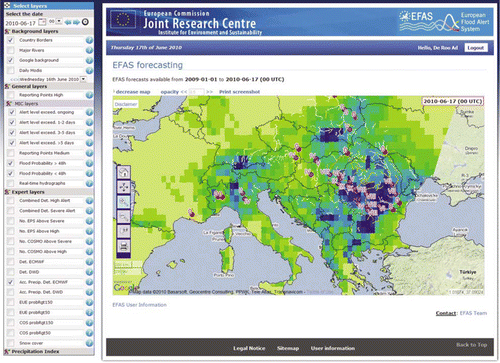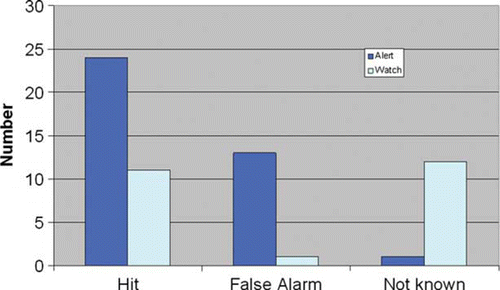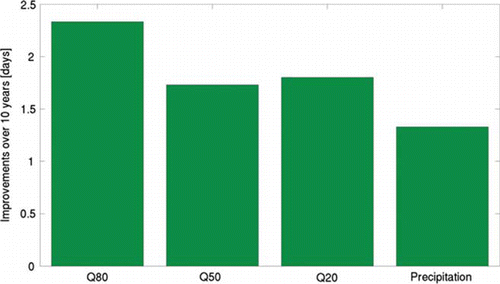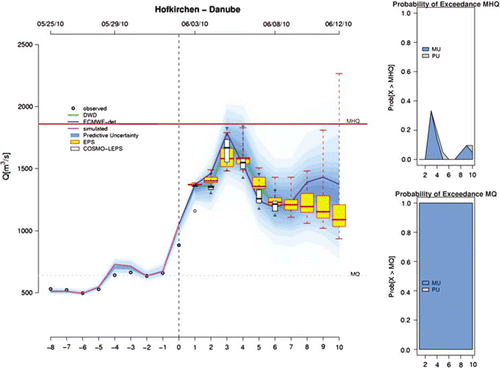Figures & data
Figure 1. The on-line European Flood Alert System: the system displays locations where flooding is predicted, as well as overlays of accumulated forecasted rainfall over the forecast domain (10–14 days). Users can zoom in and get detailed information on the points where flooding is predicted.

Figure 2. History representation of EFAS forecasts from 10 March 2006 to 14 April 2006 using ECMWF VAREPS weather forecasts for the flood in the Upper Elbe, for the gauge station Prague M. Chuchle (Czech Republic). The dates of the forecasts are shown on the left-hand side. The forecasts are shifted so that the days for which the forecasts are valid (top row) are aligned. The number in the boxes represents the number of EPS exceeding the EFAS high-alert threshold.

Figure 3. Assessment of hits and false alarms of the European Flood Alert System for 2007–2009. ‘Alerts’ are as external warnings, where EFAS forecasts show a clear persistent signal already for at least three consecutive forecasts. ‘Watch’ cases are EFAS ‘informal’ alerts where there is a signal, but where the EFAS forecasts are more uncertain.

Figure 4. Average gain in lead time over a decade for three thresholds and precipitation (ETS score).

Figure 5. Example of the error-correction application for station Hofkirchen (Germany, Danube) showing the discharge forecasts for the next 10 days starting from 5 June at time 0 (dashed vertical line). Measurements available from the previous days (–8) until time 0 are used to correct the original model estimate. In the forecast window, the MU derived from this correction, is combined with the spread in the ensemble forecast (ECMWF EPS and the higher resolution COSMO-LEPS), resulting in the ‘predictive uncertainty’ (PU) of the forecast and is shown in blue shades. On the right the probabilities of exceeding two thresholds, the mean annual maximum (MHQ) and the annual mean discharge (MQ), are shown.
